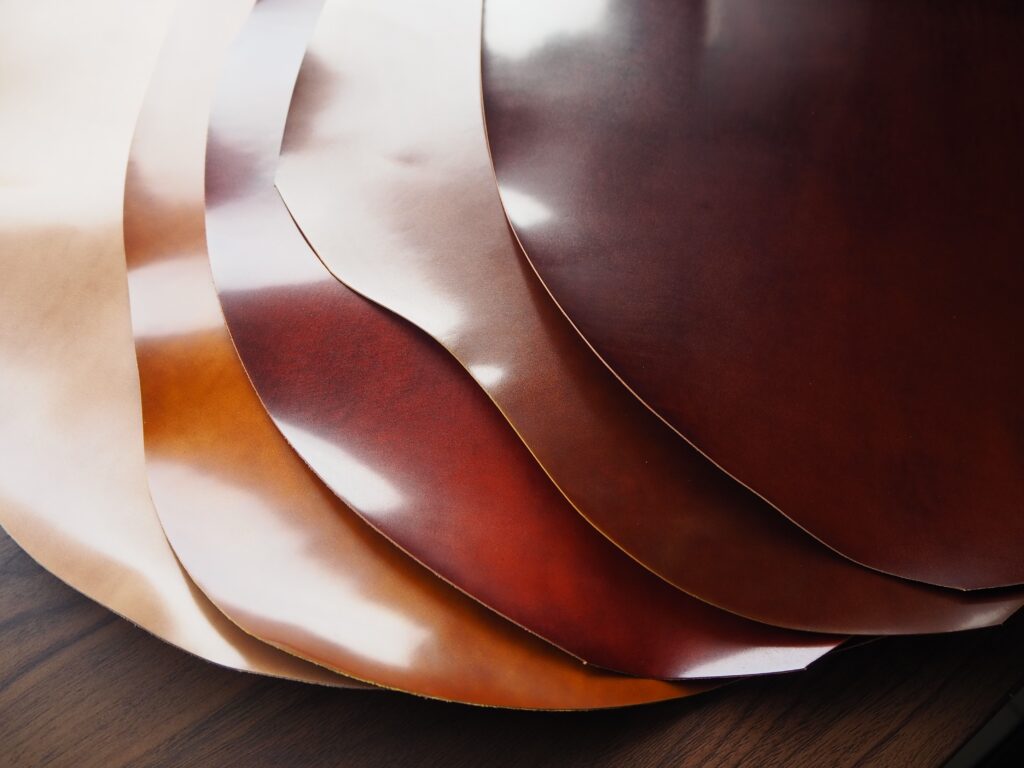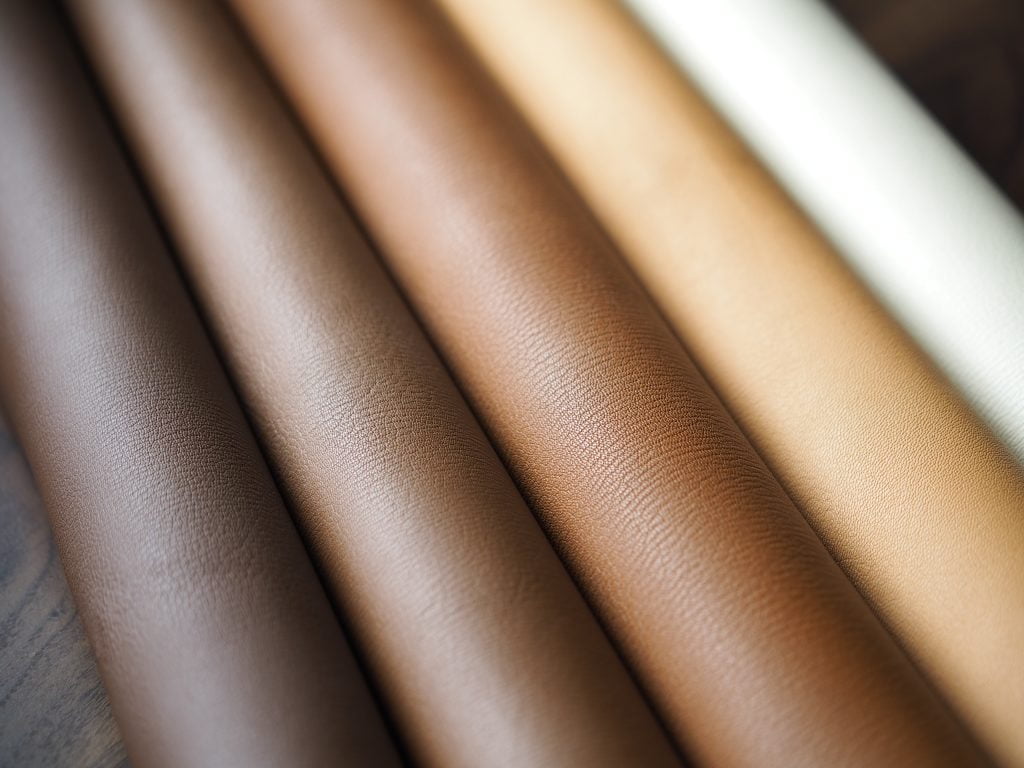Aniline Leather
Leather that has been dyed with aniline dyes, which don’t obscure the surface of the hide.
The very best hides are typically selected and an aniline leathers tends to be the most expensive and luxurious in a tannery’s range.
Chrome Tanned Leather
Leather tanned with chromium salts, which (compared to vegetable tanned leather) results in softer leather, allows brighter colors and better resistance to water and scratches. Also known as mineral tanned leather.
Corrected Grain Leather
Top grain leather that has had imperfections buffed out. Degree of correction can vary greatly. Heavily corrected leathers are typically poor quality, whereas lightly corrected ones are not uncommon among reputable tanneries.
Full Grain Leather
Top grain leather that hasn’t had its grain corrected.*
Fully lined
Every component of an item is lined. The flesh side cannot be seen anywhere on the piece. This is the most luxurious way to construct an item.
However, not all types of leather necessarily benefit from this type of construction and, in many cases, it offers diminishing returns for the increase in price.
Grain
The smooth (or textured) top of the skin, as opposed to the fuzzy reverse or ‘flesh side’.
Lining
Gluing and or sewing in leather or other material to cover the flesh side.
Semi-aniline
Leather that has been dyed with aniline dyes as to not obscure the natural surface of the skin. In contrast to aniline leather, semi-aniline leather is finished with a protective layer and or dyed with the aid of pigments to give the surface increased uniformity.
The best semi-aniline leathers can be nearly as luxurious as a comparable aniline leather, but will soil less easily, thanks to the protective layer, which can offer resistance to water, light, and scratches.
Semi-lined
The body of the item is lined with leather, but other components (e.g. pockets) are not. The flesh side is not visible on the item unless peering down the pockets. This has the advantage of providing a very clean look and strengthening the body of the item.

Shell cordovan
Leather made from tissue just under a horse’s posterior. The material is extremely dense and resilient. It’s prized for its resistance to creasing, its durability, and its unique appearance. High demand and limited supply has made it one of the most expensive leathers on the market.

Split
v. To reduce the thickness of a hide, typically done with a band splitter (a large specialized machine for performing this task)
n. The lower, or leftover, portion of a hide after a hide is split thinner.
Split Leather
Finished leather that has been made from a split. This can be suede or finished splits, which have a coating applied to them and a grain embossed. Most mass-produced leather goods are made with finished splits to keep the manufacturing costs very low.
Tanning
The chemical process of turning hides into leather.
Top grain leather
When a hide is split. The top portion is referred to as the ‘top grain’ and the bottom portion is called the ‘split’. Note that the term, ‘top grain leather’, encompasses both full grain leather and corrected grain leather.
Vegetable tanned leather (AKA "veg tan")
Leather tanned using organic materials such as tree bark. Veg tan leather is typically firmer and more natural in feel and look than chrome tanned leather.
Note: Vegetable tanning is not related to the color of the leather. When the process is complete, the leather will be beige colored, but, like chrome tanned leather, it is typically dyed.

*There is a widespread falsehood that full grain is the best ‘grade’ of leather. And, while many tanneries’ flagship leathers are full grain, full grain by itself is not a strong indicator of quality. It’s a bit like saying solid wood is the best wood. Clearly, solid wood is more desirable than, say, MDF, but there are vast differences in types of wood. Some look, feel, and age much better than others (and are priced accordingly). Precisely the same is true for leather.
Leather, in fact, is graded, but it refers to the number of defects on a hide. If one is making large items, such as bags, then it would be best to use first grade leather. For makers of smaller items, like wallets, lower grades of leather are also suitable, as one may simply cut around the defects. The underlying quality of the leather is identical. As a consumer, the grade is irrelevant, unless defects appear on the item.
